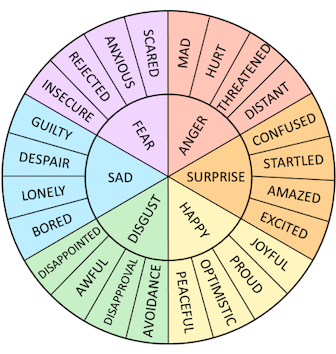Ever had trouble putting your feelings into words? Maybe you just feel “bad” but can’t explain why? You’re not alone. This vague, emotional confusion can make us feel stuck.The good news? There’s a helpful skill called emotional granularity that can make a big difference.
Understanding Emotions
So what is emotional granularity? It’s about learning to better understand and name your feelings more clearly. Think of it as your emotional vocabulary. Instead of saying “I feel awful,” you might say “I’m disappointed I didn’t get that opportunity, but also relieved I didn’t have to make a tough choice.” Being specific isn’t just about words, it helps give you clarity and options.
Here’s something interesting: when you name your emotions clearly, your brain actually handles them better. Science shows that labeling emotions calms down your brain’s “alarm system” and makes it easier to think clearly.
When you are more specific about your emotions, you can respond to them better. The good news is that anyone can get better at understanding their emotions. It’s like building any other skill - it just takes practice.
Emotion Mapping

If you’re not sure what you’re feeling, an emotion wheel can help you find the right words. Start in the center with a basic emotion like “happy” or “sad.” Next, work your way out to more specific feelings. For example, if you’re feeling “angry” you might realize that what feels like anger is actually feeling unheard or overlooked. This insight can help you work through your feelings and figure out what you need.

The next time you feel unsettled, try this exercise:
- Pause and take three deep breaths
- Ask yourself: “What am I feeling in my body right now?”. Are your muscles tense? Do you feel hot or cold? Do you have a lot of energy or none?
- Consider: “What specific emotion might this be?”
- Reflect: “What might have caused this feeling?”
Sometimes it can be hard to know if you’re just having a tough time or if you need extra help. Sometimes our feelings are part of life’s natural ups and downs. Other times they’re a signal we could use a helping hand. If you’re wondering about the difference, read our blog about emotional experiences vs diagnosis.
Ready to learn more? We’ve created guides about common challenges like feeling anxious, sad, or lonely. And if you’re looking for someone to talk to, we’ve gathered trusted resources that can point you in the right direction.
